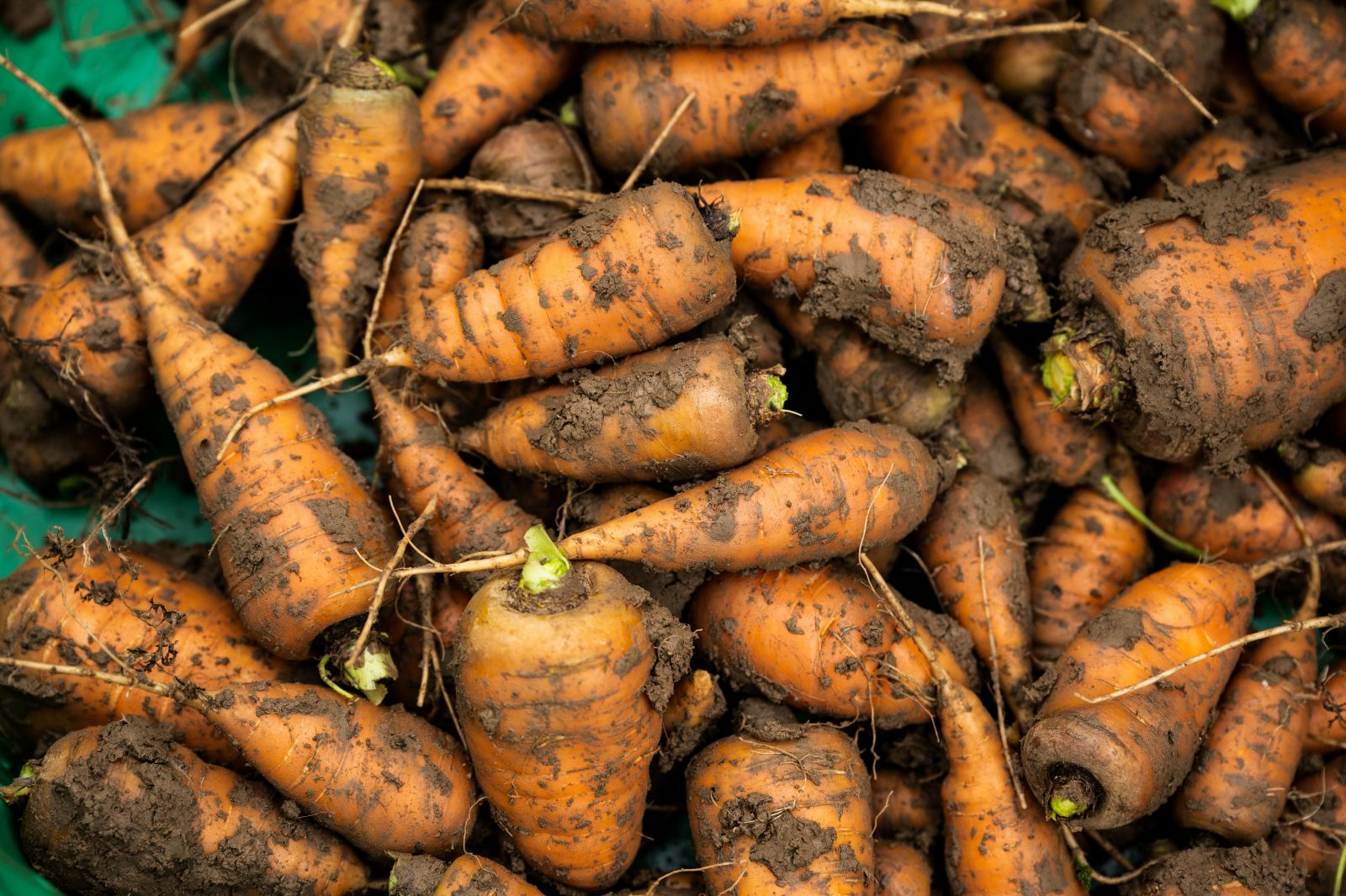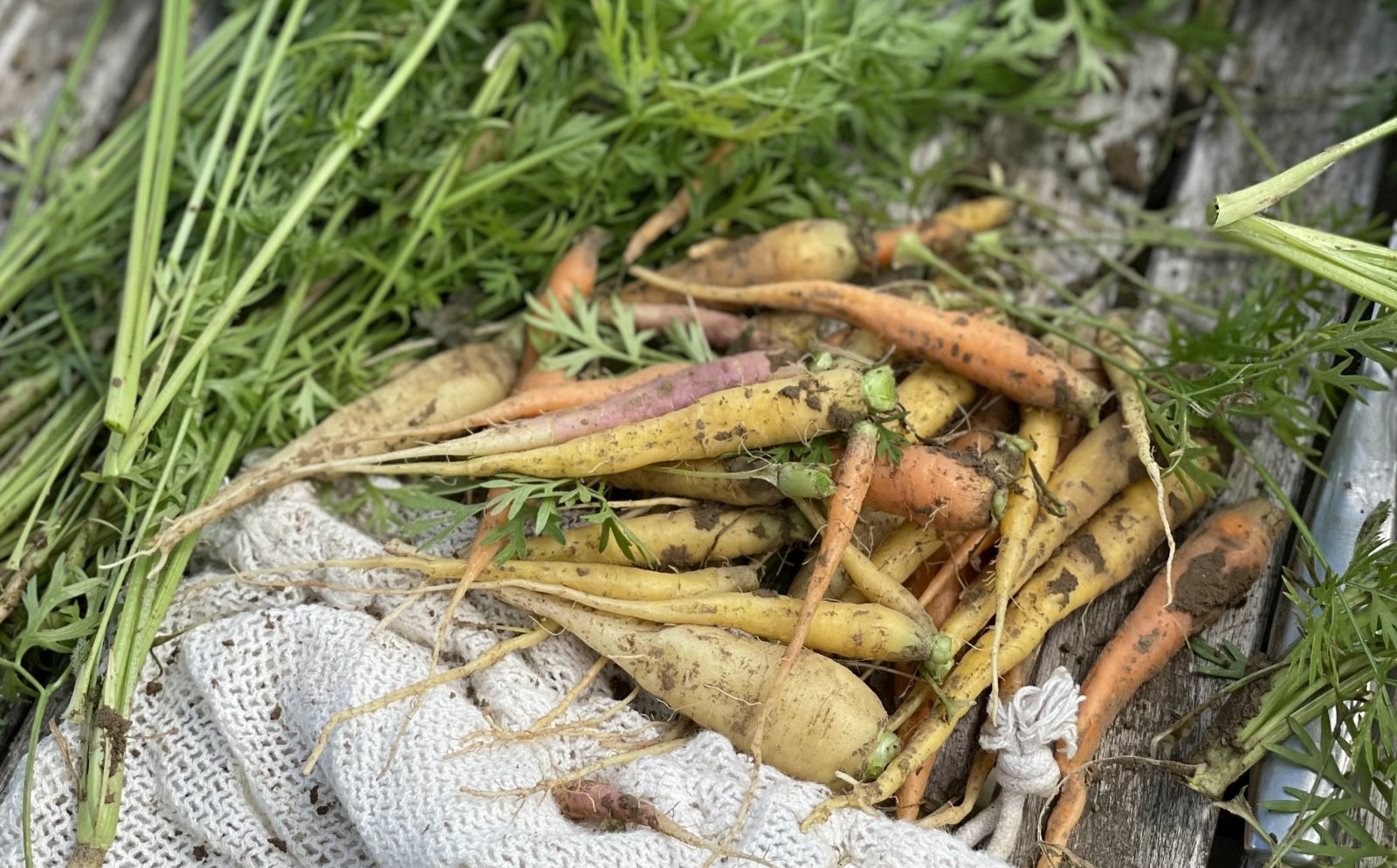Sowing carrots correctly
Sowing carrots correctly
Oh yes, whether carrots are the right term is a matter of debate. Two terms for one vegetable. In the north it's usually carrot, in the south it's carrot. I stick with carrot, unless I mean the small round things (Parisian market variety).
Now in July is the last opportunity to sow carrots for this year. Either for the fall harvest or for next spring. I have just sown some in the cold frame (foil tunnel). A variety with a very short development time. Maybe it will be something this year, otherwise they will already have a head start for next year.
What do you need to look out for?

Sowing carrots is quite easy and if the seeds are kept moist, they will come up after three to four weeks if the temperature is between 10 and 25 degrees.
The only problem is that you usually don't keep the specified distance within the row when sowing. Not because you don't want to, but the fine carrot seeds are difficult to sow individually. Cabbage seeds and even lettuce seeds are easier to sow individually or in a few grains than carrot seeds. The spacing between the individual plants varies from variety to variety. This is measured by the shoulder width of the carrot, which varies from variety to variety. In general, late varieties usually need a greater distance than the fast-growing varieties.
Spacing of 6 to 10 cm is recommended, so when sowing - as with all other vegetable varieties - you should take a look at the seed packet.
Why is plant spacing important?

Why is plant spacing important? I can get over the extra seeds! Wrong! As with all other plants, the recommended spacing should also be observed for carrots.
Why? Each plant is the natural competitor of the others, even if they are the same species. They compete for light, water and nutrients. Only if these resources are available in sufficient quantities can the carrot develop as described on the seed bag. Even if I can live with the fact that the carrot might be a few centimetres shorter, it won't grow as thick, won't grow as vigorously and likes to twist around its neighbors and become crooked.
What to do? Separate them! Crawl through the row, pull out the weeds and leave a small carrot plant every 6 to 10 cm. Personally, I do this when the weather is damp, as I don't loosen too many of the plants that should be left standing. Each time, however, you have to decide which carrot should be removed.
Which plant do I trust to grow taller than its neighbors? Singling out is the wrong approach. When sowing, we should try to sow as few plants as possible in clusters and keep as much distance between them as possible. Easier said than done. The extremely fine carrot seed is probably the most difficult vegetable to sow.
The advantages of thin sowing
- Less seed consumption
- Less work when weeding and separating
- Individual carrot plants stand out more among the weeds, these can be removed more quickly than if you are constantly afraid of catching a carrot
- Fewer plants (those that should remain standing) are loosened.
How to sow correctly

How can I sow in such a way that the spacing is maintained as far as possible? There are a few tips for this, but they have already caused frustration for many gardeners:
- Sowing seeds between thumb and forefinger
- will work really well for very few, as too many seeds fall into the seed groove at once
- Sowing in a "wide cube" instead of in rows
- doesn't make the work any easier either
- Mixing the seeds with sand in a ratio of 1:1 or 1:2 - probably only helps for people with very fine motor skills - but not for me.
This is how it works for me: this year I bought a sowing aid that allows you to easily set different seed sizes. With a little practice, far fewer seeds end up in the furrow than with the other methods. With this method, you should make sure that the seeds are not too old and still have good germination capacity, otherwise you may have gaps in the rows. Conclusion: When sowing carrots, everyone should consider how they prefer to sow: sow lots of carrots and spend some time thinning them out carefully or work with a sowing aid and good seeds, which means less work but perhaps a few fewer carrots.
In any case, if you sow too many seeds, you will not be able to avoid thinning if you want carrots that roughly match the pattern you bought. If you decide to thin out and then have to remove the small carrots several times, you can do this more often and in several stages. However, you should not wait until the carrots have already set, otherwise you will have had to divide the resources for too long. With the right method, hopefully nothing will stand in the way of successful carrot cultivation in 2022 and in the coming seasons!